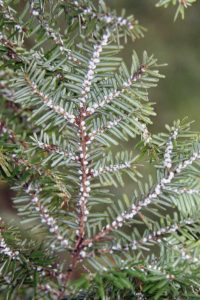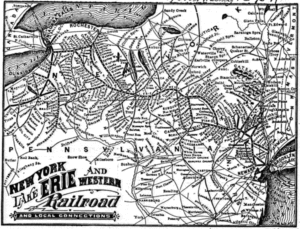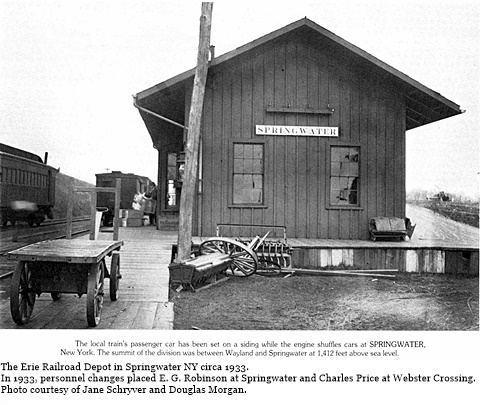Springwater Trails hikers and others may be interested in a number of program presentations (lectures) in the Mount Morris Winter Discovery Series 2017. In March, of particular salience in present day current events, as pertain to the Erie Railroad high bridge (Portage viaduct) spanning the Genesee River and construction of a replacement bridge for this 140+ year old current trestle bridge, are the March 18th & 25th programs, among other programs of potential interest.
The annually recurrent Mount Morris Winter Discovery Series is offered January through March, on varying theme and topics. Each year holds about one dozen new program presentations.
The Mount Morris Winter Discovery Series 2017, is titled: “Life in America: Winter Discovery Series 2017”. Facilities provided by The U.S. Army Corps of Engineers Mount Morris Dam and Recreation Area, located at the northern end (east side of the Genesee River) of Letchworth State Park. All lectures are free of charge and will be held in the Visitor Center on Saturdays at 1pm. The Visitor Center, aka the William B. Hoyt II Visitor Center, which opened in 1999, is an enclosed heated venue with indoor restrooms and is located adjacent the east side of the Army Corps of Engineers’ Mount Morris Flood Control Dam (which was constructed 1948-1952). Often light refreshments are served at programs of the Winter Discovery Series. [Please note, do not confuse this A.C.E. Visitor Center with the Letchworth State Park – Humphrey Nature Center which is located in Letchworth State Park on the west side of the Genesee River and further south of the A.C.E. Mt Morris flood control dam.]
Mount Morris Dam and Recreation Area Visitor Center is located at 6103 Visitor Center Road in Mount Morris, NY 14510. For more information call (585) 658-4790.
There are numerous exhibits and educational experiences in the Visitor Center, a brief opportunity may exist to view and experience some immediately prior to or after the Winter Discovery Series program. Albeit, the Visitor Center is generally not otherwise open in the winter season.
– – – 2017 Saturday Dates – – –
Author Arch Merrill described Letchworth Park as the place where Nature touches the Genesee with a magic wand and like Cinderella, the river leaves behind its ordinary garb and dons robes of dazzling splendor. Discover this geological Cinderella — how it came to be and explore the many interactions between man, river, and land. Presenter – JIM POMEROY, Biologist
January14th THE IMPACT OF WWI ON LIVINGSTON COUNTY: Life on the Homefront
In commemoration of the World War One Centennial, this program will provide an overview of the prelude to U.S. involvement and local civilian efforts and sacrifice during the Great War. Presenter – AMIE ALDEN, Livingston County Historian
January 21st SUFFRAGISTS IN EVERY TOWN AND COUNTY: How NY Women Won the Vote
November 2017 marks 100 years since New York State signed woman’s suffrage into law, three years before the U.S. passed the 19th Amendment. This was a milestone for the state and a transformative moment in American democracy. Equal opportunity is as important today as it was when Susan B. Anthony was arrested in Rochester for attempting to vote. Presenter – CHRISTINE RIDARSKY, Rochester Historian
January 28th EARLY WOMEN PHYSICIANS OF THE GENESEE COUNTRY
Did you know that two of the female students and one professor at the first truly co-educational medical school in the country came from the Genesee Valley? Uncover a fascinating story which shows how our region contributed to women’s ability to study medicine alongside men -a radical theory at the time. Presenter – JANE OAKES, Local Historian
February 4th OUR NATIONAL PARKS
Our National Parks have been called “the greatest idea America ever had.” This program covers the background of our National Park Service from its official creation in 1916, but really starts with the formation of the world’s first National Park -Yellowstone. Presenter – CRAIG BRAACK, Allegany County Historian
February 11th THE BURNED OVER DISTRICT
In the 19th century, New Yorkers were gripped by waves of religious revivalism. New groups established churches and utopian experiments all vied for converts. Examine the Shakers, Millerites, Mormons, Spiritualist and Evangelists and the impact that they had on social change. Presenter – PETER WISEBY, Genesee Country Village and Museum
February 18th WATER-POWERED MILLING
Follow the development of water-powered milling from strong beginnings in a new nation to its appearance in the Genesee Valley. We’ll journey through the pioneering discovery of the natural resources of the mighty Genesee River that excited the early American settler to pursue mechanization and industrial innovation. Presenter – ALEX PIERCE, Local Historian
February 25th THE GIANT CARDIFF – America’s Greatest Hoax
A ten-foot tall petrified giant is unearthed on a farm near the small rural town of Cardiff, New York in 1869. The word of the discovery soon ‘echoed’ across the countryside and it was quickly sheltered from the weather by a canvas tent to protect paying gawkers from the whims of New York’s weather. Presenter – RICH HAMELL, Geologist
March 4th LEGACY OF MILITARY SERVICE
Join Steve on a journey of his family’s military connections to conflicts during King Henry IV’s usurpation of the English throne in 1399 to King Philip’s War (1675), the Revolution, War of 1812, Civil War and on to the modern era. Presenter – STEVE CLARKE, Genealogist
March 11th NON-TRADITIONAL 19th CENTURY NUNDA WOMEN
As the women’s rights movement gathered strength in the late 1800’s, Nunda women were leaders in business, politics, medicine, art, education, and more. Hear their stories. Presenter – JOAN SCHUMAKER, Local Historian
March 18th LIFE IN THE LAND OF LETCHWORTH FROM NATIVE TIMES TO MODERN DAY
People have lived along the Genesee River for thousands of years. Join Tom as he explores life in the Valley through local stories, maps, photographs, diaries, and more. Highlights include the experiences of the Jemison family, early pioneers, the Letchworths, and some 20th century park families. Presenter – TOM COOK, Local Historian
March 25th The ROLE OF CAMP PORTAGE AND THE ERIE RAILROAD IN THE AMERICAN CIVIL WAR
Learn about the creation of Camp Portage (a Civil War Training Camp in Letchworth State Park) and the use of the Erie Railroad to transport Union Soldiers to the front lines! Presenter – MAX SZEMPLENSKI, Railroad Historian





